(327 products available)

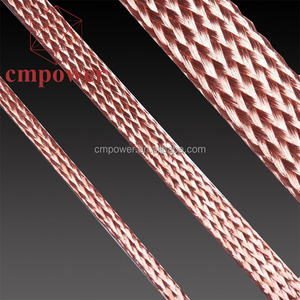






























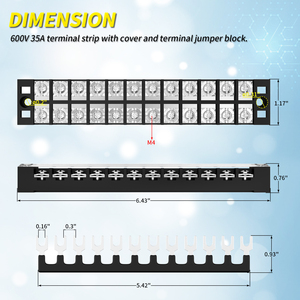


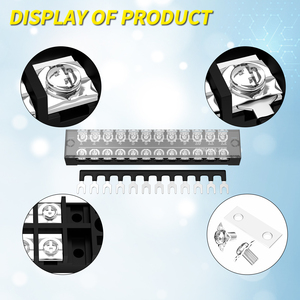
















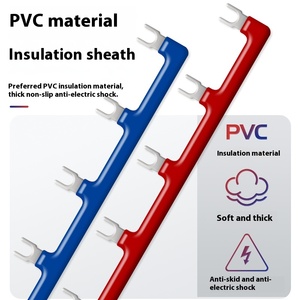












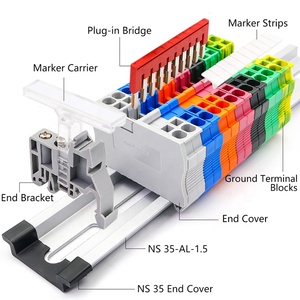




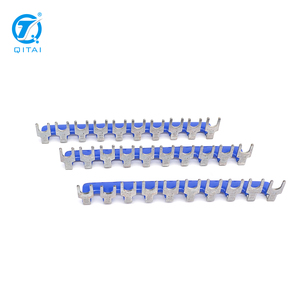

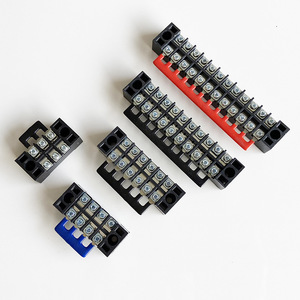






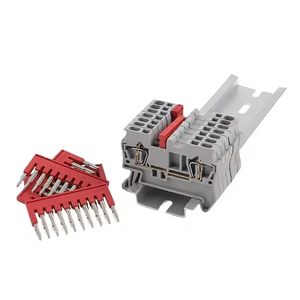

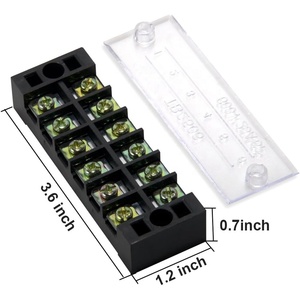













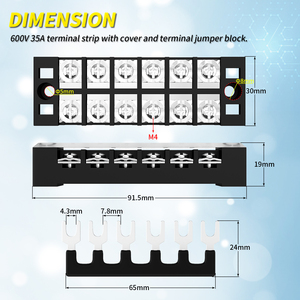
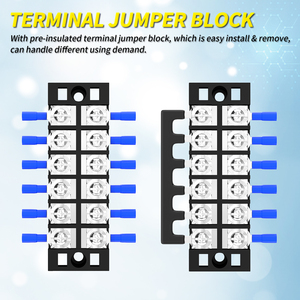





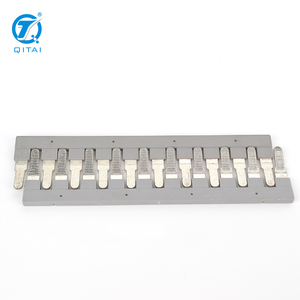
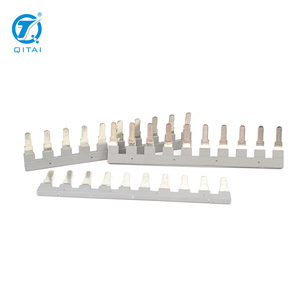










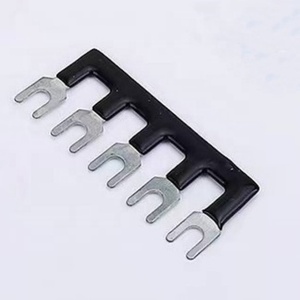




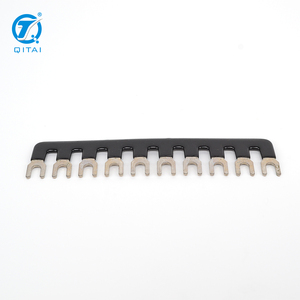






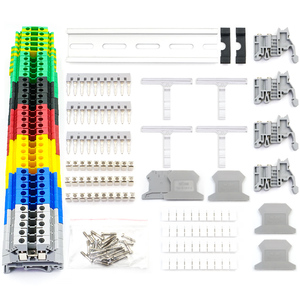







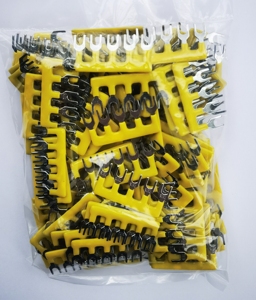

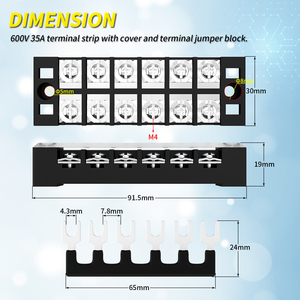
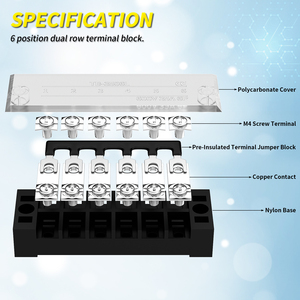

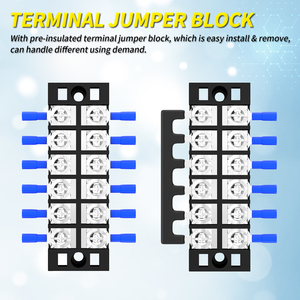




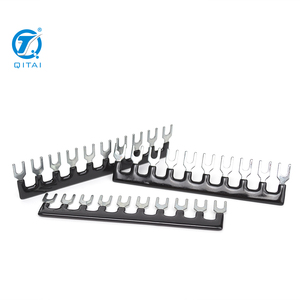







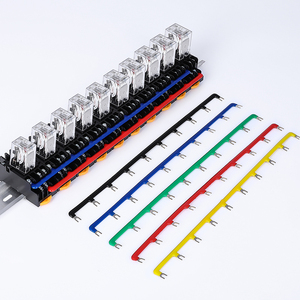
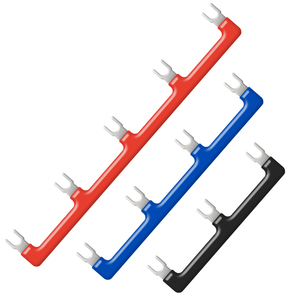










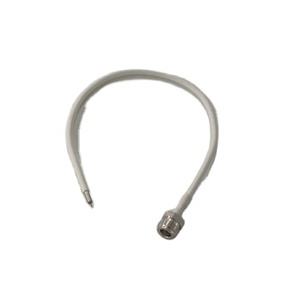















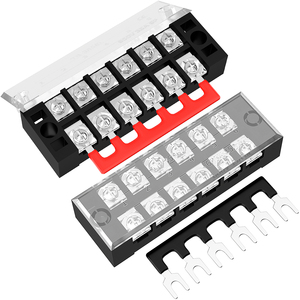














Jumper strips have multiple variants, with each having its merit and demerit. Knowing these types will put one in a better position to select the most suitable jumper is needed for the project at hand.
Plastic Jumper Terminal Strips
Jumper strips include a plastic base that is lightweight, non-conductive, and flexible. This property makes these strips ideal for low-voltage applications. The plastic base should tolerate some degree of environmental temperature change. Plastic strips find frequent applications in appliances, low-voltage control systems, and areas where electrical insulation is essential.
Copper Jumper Terminal Strips
Copper jumper strips are one of the most effective strip types based on material conductivity. Copper offers superior electrical conductivity, which is why wiring experts prefer it for high-current and professional-grade applications. Despite being on the heavier side and more expensive than other material options, copper terminal strips are commonly chosen to decrease voltage drops in sensitive machinery or heavy-duty operations.
Aluminum Jumper Terminal Strips
Aluminum strips provide a lightweight and cost-friendly alternative to copper. While aluminum's conductivity is slightly poorer, its sheer strength and reduced mass make it ideal for large-scale electrical power salons and overhead spaces. Aluminum strips also require a coating for corrosion resistance as they are susceptible to oxidation when used outdoors or in hostile environments.
Metallic Alloy Jumper Terminal Strips
These strips are built from conductive metal alloys as a compromise between copper and aluminum. They possess good conductivity, strength, and corrosion resistance. Most of the time, these alloys are employed in places where mixing the two elements is likely to result in unwanted outcomes, for example, under high humidity or maritime conditions. Automotive, marine, and industrial devices often use alloy strips.
Ceramic Jumper Terminal Strips
Ceramic strips, which are electrical insulators but conduct heat, works well for high-temperature applications. They are effective in environments with extreme heat, as well as manufacturing involving furnaces or kilns. Even though ceramic offers the best resistance to heat, their electrical conductivity is lower than that of metals, making them exclusively suitable for high-heat scenarios and low-current activities.
Copper
Copper is frequently utilized as a metal for jumper terminal strips because of its phenomenal electrical conductivity. Copper is a reasonably malleable and corrosion-resistant metal with superior conductivity than most metals, making it suitable for high-voltage and current electrical applications. It is used in commercial, residential, and industrial yards, where strip terminals are required for effective power transfer, copper's conductivity properties are unrivaled. Copper strips are favored for soldering, as an embedded part, or for other assembly processes to achieve optimal electrical performance.
Aluminum
Aluminum is used as a base material for a jumper terminal strip to provide a lightweight and affordable substitute to copper. Although aluminum has lower electrical conductivity than copper, its strength-to-weight ratio and high tensile strength make it suitable for giant structures like power grids and overhead lines. It is: usually coated with an additional layer of metal, such as nickel or tin, to prevent oxidation and enhance conductivity. Aluminum strips are widely used in outdoor, marine, and power distribution activities to give a combination of lightness and cost-effectiveness.
Brass
Brass, an easily malleable copper-zinc alloy, is popular for manufacturing jumper terminal strips because of its moderate-level conductivity anti-corrosion features. It is treated and finished with parts that are subjected to frequent connections and disconnections since it withstands tarnishing and oxidation. Due to these properties, it makes an ideal jumper terminal strip for marine environments, electronic equipment, or any application where durability and corrosion resistance will be required. Besides, brass is inexpensive and easy to machine, which adds to its appeal for manufacturers.
S stainless Steel
Stainless steel is a galvanized iron and carbon alloy with chromium and other metals in its concentration, thus corrosion-resistant. Although it has lower electrical conductivity than copper and brass, stainless steel is ideal in harsh environments that require high temperatures and chemical exposure. It is: very hard, does not corrode or wear easily, making it suitable for applications that need strength and durability. Stainless steel strips are commonly used in industries: such as chemicals or food processing and manufacturing equipment.
Tin-Plated Steel
Tin-plated steel jumper terminal strips combine conductivity and affordability. Tin's resistance to corrosion is provided with the strength and low cost of steel. Tin has excellent solder-ability and oxidation resistance, making it ideal for electronic applications requiring cost-effective, dependable solutions. Automotive, electronics, and other industries where environmental protection and soldering are required are examples of places where these strips work well.
Power Distribution and Electrical Grids
Jumper strips are fundamental components in power distribution systems and electrical grids. They allow for the safe and efficient transfer of electrical flow between circuit elements, reducing voltage loss and enhancing overall system efficacy. The increasing emphasis on modernizing and expanding electrical infrastructures in various locales contributes to the importance of jumper strips in this field and a lucrative market prospect.
Industrial and Manufacturing Applications
Terminal strips are indispensable in industrial machinery and manufacturing plants for wiring and control system connections. They ensure reliable electrical connections in the heavy and fast-paced industrial settings where machines operate. Jumpers play a fantastic role in process reliability and minimizes downtime, which is why they are in huge demand in the industrial arena.
Automotive and Transportation Industry
Automotive and transportation industries use electrical systems and wiring harnesses in vehicles and public transit systems, incorporating terminal strips. They connect various electrical components and ensure the system operates smoothly without failure. With the growing popularity of electric vehicles and advanced automotive technology, there has never been such a demand for terminal strips of all kinds, especially for durable and lighter ones.
Telecommunications and Data Centers
Telephone communication systems and data centers use terminal strips for wiring and connectivity. This demand is caused by the growing need for data centers, high-speed communication systems, etc. Terminal strips keep serving reliably as infrastructure becomes denser. Moreover, telecom and IT industries need such terminal strips designed to maintain high-performance connectivity and facilitate quick and easy installation.
Marine and Aerospace Industries
The marine and aerospace industries depend on terminal strips to electrical wiring harnesses and systems. In these activities, resistance to corrosion, weight, and the ability to function in extreme conditions are vital. The jumps of terminal strips in corrosive atmospheres, such as saltwater or high-altitude areas, nurture their significance in marine and aerospace businesses. Demand will most likely remain for premium materials and terminal strips that comply with safety regulations, given the need for reliable and lightweight components in both industries.
Application Requirements
It is important to seek out the application need on the jumper terminal strip. Think about the voltage and current levels the strip can endure. For low-voltage systems, a copper or plastic terminal strip can do the job. However, high-voltage applications might call for copper or alloy strips. Be sure to evaluate the environmental elements of concern. Select materials with capabilities that adequately address these concerns.
Strip Material and Construction
Selecting the proper jumper terminal strip will highly depend on the materials and constructions used. Copper strips offer stellar conductivity, as already mentioned, while aluminum provides a lightweight and cost-effective substitute. Terminal strips made of alloys prove to be a great compromise in several hostile working conditions. Consider the corrosion resistance and whether the material is suitable for the environment in which it will be used. Thickness and strength may also be important in terms of the overall durability of the strip.
Compatibility with Electrical Systems
It is important to ensure that the terminal strips are perfectly compatible with the wiring and other objects in the electrical systems used. There goes an example of the jumper strips that are rating in line with the gauge sizes of the electrical wiring. Although the nominal voltage may differ from the overall system, ensure the strips can operate at those levels. Likewise, confirmed strip spacing and configuration correspond with a system to avoid wiring errors and guarantee smooth connections.
Easy Installation and Maintenance
In choosing a terminal strip for a specific environment, terminal strips that can afford easy installation and maintenance should be sought. Easy-to-mount terminal strips reduce installation time and complexity during setup. Likewise, maintenance and accessibility ability are important concerns as they would help minimize downtime in electrical systems. Selecting strips with proper markings and clear labeling help the quickest identification of circuits during servicing or troubleshooting.
Industry Standards and Certifications
Industry standards and certifications are always useful in determining the performance and reliability of terminal strips. It is mostly recommended that the strips to be used are manufactured by companies that comply with IEC, UL, and RoHS standards. These certifications ensure that the terminal strips comply with safety, endurance, and environmental protection requirements. In applications where premium performance is mandatory, especially in the marine and aerospace industries, certification is a necessity because of the possible stakes involved.
A1: Jumper terminal strips are specifically designed to connect or "jump" between circuits, allowing for flexibility in electrical configurations. Regular terminal strips, used for circuit connections, lack this jumping capability.
A2: Copper, aluminum, and brass are the most common materials used for terminal strips due to their excellent conductivity. Tin-plated steel and metal alloys are also used for specific applications requiring resistance to corrosion or oxidation.
A3: Jumper terminal strips are commonly used in industries like power distribution, automotive, telecommunications, and manufacturing, where reliable electrical connections are essential. They are also used in marine and aerospace applications due to their resistance to corrosion.
A4: Regular inspections, routine cleaning to remove debris or corrosion, and proper environmental shielding (e.g., moisture control) are key maintenance practices that keep the terminal strips working properly and enhance durability.
A5: Key considerations include the operating environment, electrical load, strip material compatibility with other system components, strip spacing, and industry standards adherence.